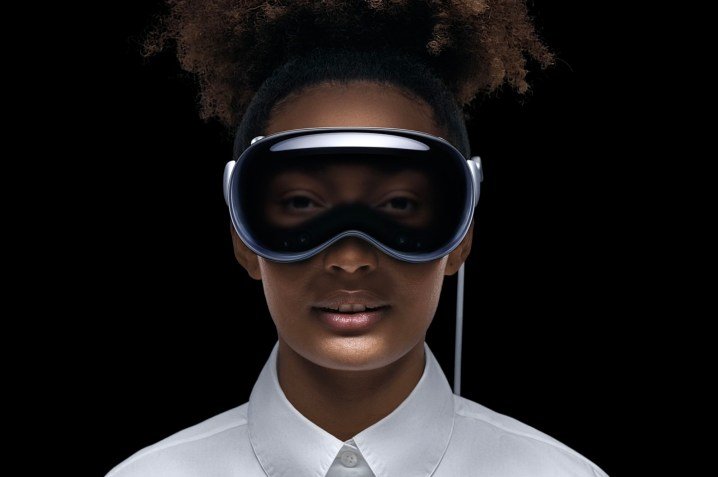Behind the Vision Pro: How Apple Sourced Extensively from Japan
In the realm of technology, collaboration often leads to groundbreaking products that redefine user experiences and set new industry standards. A prime example of this is Apple’s Vision Pro, a device that represents the seamless blend of Eastern innovation and Western design philosophy. At the heart of this collaboration are Japanese companies like Sony and Kioxia, whose cutting-edge technologies have been integral to the development of the Vision Pro. This article digs into the contributions of these Japanese tech giants, accounting for about 40% of the components used in this new device. This proportion of Japanese suppliers is significantly larger compared to the latest iPhone, which only sourced 10% of its parts from Japan.

Picture credit: Apple
Sony’s Groundbreaking Displays: Shaping the Visual Experience
Sony’s legacy in display technology is well-established, and with the Vision Pro, they have once again pushed the boundaries of what’s possible. Sony supplied the majority of the components, including the sensors and displays. The device features an advanced display system that leverages Sony’s innovative screen technologies, providing users with an unparalleled immersive experience. The clarity, colour accuracy, and depth perception of these displays are instrumental in making the Vision Pro a benchmark in visual experience.
This collaboration signifies more than just a supplier-client relationship, it represents a shared vision for the future of technology. Sony’s commitment to excellence and innovation in display technology complements Apple’s design philosophy, resulting in a product that stands out in the market. The partnership also illustrates the global nature of tech innovation, where companies across borders come together to create something truly exceptional.
Kioxia’s Essential Memory Devices: Powering the Experience
Equally important to the Vision Pro’s success is Kioxia’s contribution. Formerly known as Toshiba Memory, Kioxia is renowned for its high-quality memory solutions. In the Vision Pro, Kioxia’s memory devices ensure smooth, efficient, and reliable performance, enabling the sophisticated features that users have come to expect from Apple products.
The integration of Kioxia’s memory devices into the Vision Pro highlights the critical role that storage technology plays in modern electronics. As devices become increasingly complex, the demand for faster, more efficient memory solutions grows. Kioxia’s innovations meet these demands, enabling not only Apple but also the broader tech industry to advance.
Implications for the Industry and Procurement Strategies
The collaboration between Japanese tech giants and Apple has far-reaching implications for the technology industry. First and foremost, it showcases the importance of international partnerships in driving innovation. Encouraged by their global recognition and the demand for their high-quality components, Japanese companies are destined to invest more in pioneering new technologies, especially in areas like display technology, semiconductor memory, and other electronic components. This could spur a wave of innovation within the local industry, leading to the development of more advanced technologies and materials. The competitiveness of Japanese high-tech companies stems from their extensive utilization of overseas factories, particularly in Thailand and Vietnam, coupled with a growing presence in India in recent years.
Moreover, the collaboration between Apple and Japanese tech companies sets new standards for the industry, pushing competitors to elevate their own offerings. Japanese companies’ role in producing components for the Vision Pro indicates their capacity to adapt to and anticipate market trends, such as the rising demand for immersive technology and high-performance computing. As companies strive to match or exceed the benchmarks set by the Vision Pro, consumers can expect a new wave of innovation and quality in technology products.
The success of the Vision Pro also highlights the significance of display and memory technologies in shaping user experiences. As the industry moves towards more immersive and complex devices, the demand for advanced displays and efficient memory solutions will continue to grow. This presents both challenges and opportunities for tech companies worldwide.


